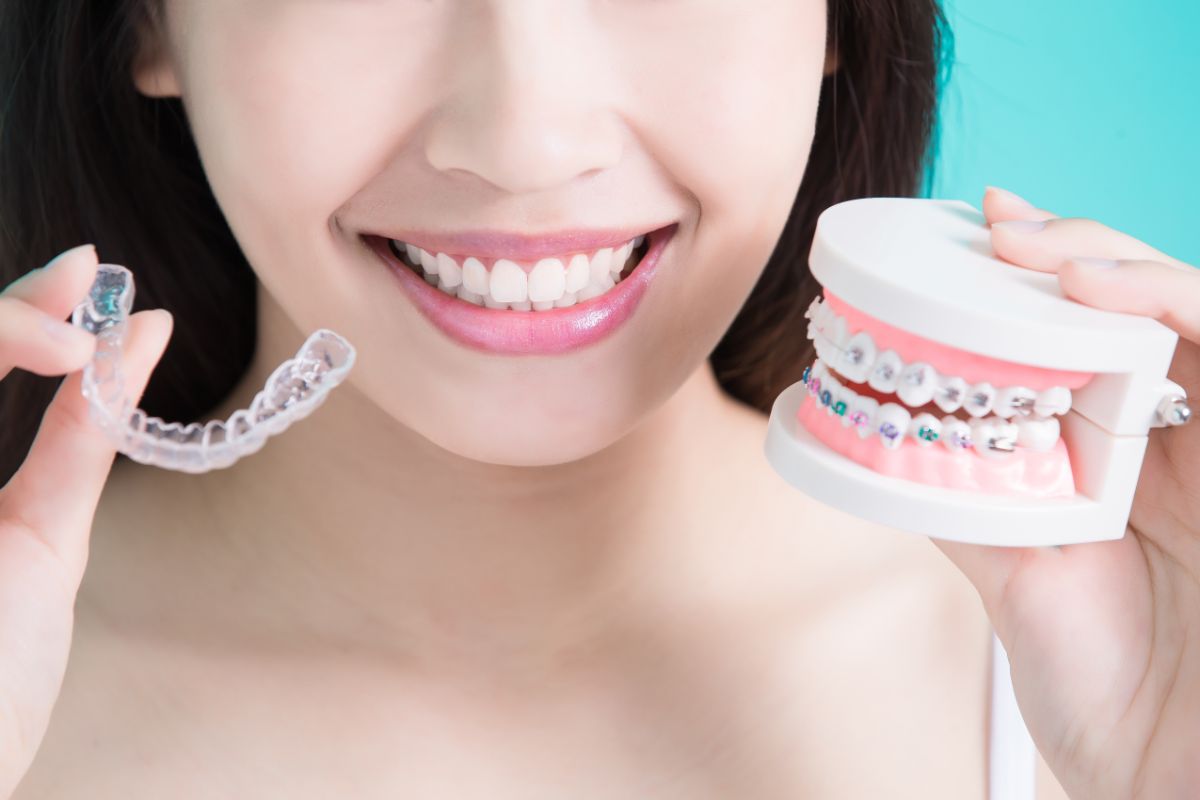Did you graduate high school with a beautifully aligned smile or enter adulthood with perfectly straight teeth? Is that same smile still in place today, or have you noticed some shifting over the years? If you no longer love the smile you see in the mirror, you don’t have to just accept it—there are plenty of touch-up and retreatment options available to get things back on track again!
Here at Griffin & Errera Orthodontics, we often hear from adult patients who are experiencing something known as orthodontic relapse. This term describes the tendency a patient’s teeth have to drift back to their original positions after treatment. You can have a short-term relapseoccur within the first year post-treatment or experience a long-term relapsemore than a year after completing treatment.
Orthodontic relapse is a fairly common phenomenon. Some studies estimate that about half of all patients will experience at least some level of relapse within ten years of finishing their treatment. One reason for this is that many adults now dealing with relapse were told as teen patients that they could discontinue wearing their retainers after a year or two. Orthodontists have now changed their approach, with most agreeing that retainers should be worn part-time for life.
This can initially sound overwhelming, but don’t let the recommendation scare you! After a period of adjustment, most patients will only need to wear their retainer overnight to keep their smile on the straight and narrow. But what happens if you are already experiencing some shifting of your teeth? Let’s explore a bit more about what causes orthodontic relapse and what your options are for treating it!
What causes an orthodontic relapse?
There are several possible reasons for orthodontic relapse, but the most common is irregular retainer use. It can be easy to underestimate the importance of retainers, especially once some time has passed, but treatment doesn’t stop the moment your braces come off! After the initial phase of treatment is complete, the teeth and surrounding bone still need time to solidify in their new locations. Wearing a retainer regularly helps protect teeth from the forces trying to pull them back to their previous positions. It also assists with the stabilization effort over time.
While irregular retainer use is the biggest reason we see relapses, there can be other contributing factors. These include the following.
Genetics and natural aging
Even if genetics give you a beautiful smart to start with, you may still experience some natural shifting of your teeth as you grow older. Whether you’ve had orthodontic treatment or not, the back teeth tend to shift forward over time. This reduces the amount of space available for the front teeth, which can be crowded out of the arch alignment.
Teeth grinding
Chronic tooth grinders already know some of the damage it can cause, but you may not be aware that the continuous force of it places a strain on the teeth that can alter the bite and cause misalignments.
Tooth loss
If you’ve lost one or more teeth due to trauma, decay, or periodontal disease, the teeth surrounding that empty space may begin to drift towards it over time. If this is left uncorrected over time, it can eventually lead to misalignment of the teeth and the bite.

How are orthodontic relapses treated?
After all the hard work you put into your smile when you were younger, it can be frustrating to see your teeth shifting for any reason now that you’re older. The good news is, we’re here to help! There are a few different options when it comes to addressing orthodontic relapse. We’ve outlined each of these methods for you below.
Monitoring the teeth
Even with consistent retainer wear, you’re likely to experience some very minor tooth movement over time. The bone and gums supporting your teeth change as you age, and retainers can also become slightly distorted with wear. If you’ve worn your retainer as directed over the years and have noticed only minor shifting of your teeth, we may be able to leave things as they are for the time being and simply monitor your teeth for any further shifting.
New retainers
Some types of minor movement will need to be treated, and we are often able to do so with a new or replacement retainer. If you’ve lost or broken your current retainer, this will likely be one of the first steps we’ll take.
Retreatment
If Dr. Griffin or Dr. Errera finds that you’ve suffered a more significant relapse, they may recommend retreatment. As an adult, you might balk at the idea of dealing with traditional braces again. Fortunately, we have a variety of affordable treatment options to correct your relapse and (re)create a beautifully aligned smile! These include:
Traditional braces
Traditional metal braces are an orthodontic staple and with good reason! This is one of our most efficient treatments, particularly for more severe or complicated cases. Modern braces use high-quality stainless steel, but innovations in the design mean they’re much more comfortable than previous versions. The total treatment time also tends to be shorter than it used to be.
LightForceTMtooth-colored custom braces
This innovative bracket system uses 3D technology to customize every tooth-colored bracket for the perfect fit. The braces are designed around each patient’s teeth, making treatment more efficient and comfortable with fewer appointments and faster treatment times! Since LightForce braces adhere to your mouth more precisely, the custom brackets can also reduce the risk of orthodontic emergencies.
Clear aligners
Instead of brackets and wires, these innovative systems use a series of clear aligners to move your teeth into the desired positions. The trays are made from a strong and durable material that is custom-designed to fit comfortably over your own teeth. Because the aligners are almost invisible andremovable, they offer an extra measure of flexibility during treatment that patients love! There are no food restrictions, and oral hygiene is a lot easier, too, since there are no braces to navigate around.

Love your smile again with Griffin & Errera Orthodontics
The thought of initiating orthodontic treatment again may be daunting, but there are good reasons for addressing your orthodontic relapse. First and foremost is improved oral health. Crowded teeth create crevices in which food particles can accumulate, leading to plaque and tartar buildup. Teeth that are properly spaced and aligned are easier to keep clean with a solid dental hygiene routine.
Touch-ups and retreatment can also give you back the beautiful smile you once had! This will help you feel more confident in your day-to-day life and boost your self-esteem. Correcting a relapse also tends to take much less time than your original treatment! Whatever option you choose with our doctors, the results will be more than worth it once you love the smile you see in the mirror again.
Whatever the reason for your orthodontic relapse, we can recreate the smile you’ve been missing, and improve your oral health in the process. If you’re ready to take the first step towards reclaiming the perfect smile, get in touch today to schedule a FREE consultation in our Middleburg, Warrenton, or Culpepper office!
